1388 - Origins of the Inn
The precise date of the establishment of the Inn in the premises of the Grey’s manor house is not documented. The earliest known reference to the existence of the Inn as a lodging of lawyers appears to be in 1370, when it is referred to as a “hospitium”. The first definite reference to Gray’s Inn was in 1388 when two of its Members were Called as Serjeants-at-law.

1530 - First Treasurer
Autumn Reader in 1530, William Walshingham was then appointed the first Treasurer of Gray’s Inn from Michaelmas in the same year. He is, however, most notable as the father of Sir Francis Walsingham, Queen Elizabeth’s famous, and notorious, Principal Secretary, himself admitted to Gray’s Inn in 1552.
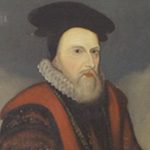
1541 - Lord Burghley
William Cecil, later Lord Burghley (1520-1598), was admitted to the Inn in 1541 and elected an Ancient 1547. Outside of the Inn, Burghley was chief adviser to Queen Elizabeth I for most of her reign, twice Secretary of State and Lord High Treasurer from 1572.
1588 - Armada Screen
The Armada Screen at the west end of Hall, installed in 1588, was once believed, in part at least, to contain wood salvaged from a Spanish galleon and the gift of Queen Elizabeth I (the Inn’s patron lady). The defeat of the Spanish Armada was led by the Admiral Lord Howard of Effingham, a Member of the Inn.
1594 - Comedy of Errors
On 28 December 1594 the first known performance of Shakespeare’s “The Comedy of Errors” took place in Gray’s Inn Hall as part of the Inn’s Christmas festivities.
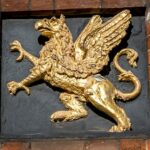
1600 - The Griffin
Around 1595-1600 the Inn ceased to use the arms of the de Grey family and instead adopted the Griffin as its official badge.
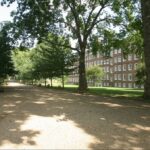
1608 - The Walks
The Inn’s gardens, known as ‘the Walks’, were laid out by Sir Francis Bacon in 1608. The Walks today remain one of the largest privately owned gardens in London.

1608 - Sir Francis Bacon
Sir Francis Bacon was admitted to the Inn in 1576, becoming a Bencher in 1586, one of the first men to do so without being elected as Reader first. He was later appointed as Treasurer in 1608, when he began the renovation of Gray’s Inn Walks, serving until 1617.
1611 - King James’s Bible
The King James Bible is an English translation of the Bible for the Church of England, sponsored by King James VI. Of the 47 scholars involved with work on the King James Bible, 8 were connected to the Inn.
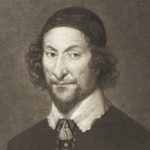
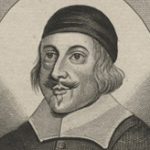
1649 - The Regicides
Members John Bradshaw (1602-59; Called 1627) and John Cooke or Cook (1608-60; Called 1631) were the judge (President of the High Court of Justice) and prosecutor respectively at the trial of Charles I in 1649.
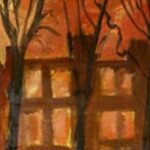
1684 - Disastrous Fires
In the late 17th Century, the Inn suffered a series of disastrous fires, which substantially depressed its fortunes, having already been weakened by the Civil War and the changes in the legal system. The most damaging was that of 1684, which destroyed several buildings, the library and the majority of the Inn’s ancient records.
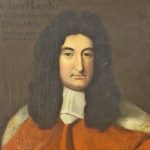
1689 - Sir John Holt
Sir John Holt (1642-1710; Called 1663) sat as Lord Chief Justice from 1689. In a time when the legal system was notoriously corrupt and inefficient, Holt was famous for his enormous integrity and fairness in judgment. He was particularly influential in ending the prosecution of witches.
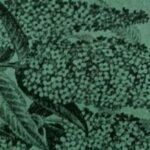
1702 - Revd Adam Buddle
Revd Adam Buddle (1662-1715) was appointed Gray’s Inn Chapel Reader in 1702. Buddle was not only an impoverished clergyman but also a noted botanist, especially expert in mosses. Linnaeus named the buddleia in his honour.
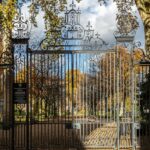
1723 - Gates to the Walks
The wrought iron gates, leading into the Walks from Field Court, were erected in 1723 when William Gilbey was Treasurer. Gilbey’s initials can be seen, alongside a T for Treasurer, in the gates. The Walks today remain one of the largest privately owned gardens in London.
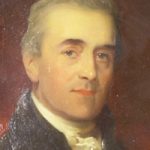
1783 - Sir Samuel Romilly
Samuel Romilly (1757-1818; Called 1783) was one of the most distinguished Inn Members of the turn of the 18th century, Romilly’s reforming efforts contributed massively to his reputation. Romilly was also a vocal opponent of the Slave Trade and gave his support to William Wilberforce’s abolition campaign.
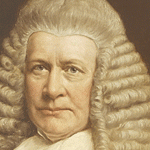
1840 - Sir Robert Lush
Sir Robert Lush (1807-81; called 1840; Treasurer 1860) was one of the few prominent Members of the Inn of the 19th century. He was known in his day for his unassuming character, sharp intellect, clarity of expression and complete lack of interest in politics.
His son Sir (Charles) Montague Lush (1853-1930) was also a distinguished Member of the Inn.
Robert Lush is now particularly remembered now as one of the judges in the Tichborne Case of 1873-74. The eccentric Dr Kenealy, the claimant’s defence counsel, who by the end of the trial was disgraced and shortly afterwards disbarred, was also until then a Bencher of the Inn.
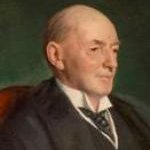
1891 - Lord Atkin
James Richard Atkin (1867-1944), later Lord Atkin, was Called to the Bar in 1891 and served as a Lord of Appeal in Ordinary from 1928 till his death in 1944. Atkin is known for the landmark ‘Snail in a Bottle’ case which established the modern law of negligence in the UK, and the rest of the world.
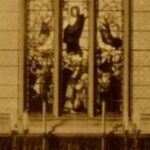
1893 - Chapel Restoration
The Inn’s Chapel was restored in a late Gothic style in 1893, which it remained until it was destroyed during World War II.
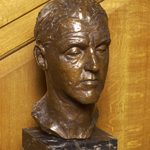
1899 - Lord Birkenhead
F E Smith (1872-1930; Called 1899), later Lord Birkenhead, was equally well-known for his successful career at the Bar and his subsequent political career.
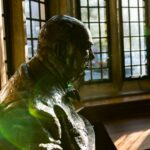
1918 - Winston Churchill
Winston Churchill and Franklin D. Roosevelt first met in 1918 at a dinner in Gray’s Inn Hall, both were later elected Honorary Benchers of the Inn during World War II. A bust of Churchill is located in Hall.
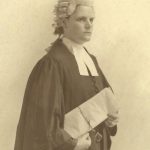
1920 - Women Admitted
After much campaigning and the introduction of the Sex Disqualification (Removal) Act in 1919 allowed women to be admitted to the Inns of Court. On 27 January 1920, Mary Selina Share Jones became the first woman admitted to Gray’s Inn. Edith Hesling went on to be the first woman Called to the Bar at Gray’s on 13 June 1923.
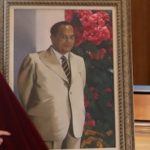
1922 - Dr B. R. Ambedkar
Dr B. R. Ambedkar (Called: 1922) was a crusader for social justice and the chief architect of India’s Constitution which secured social and fundamental legal rights and equality for its citizens. A Barrister, economist, politician and reformer, he was the first Law and Justice Minister of independent India.
1941 - The Blitz
The Inn suffered extensive damage during the Blitz, particularly during the raid of 10/11 May 1941. Fortunately, the stained windows in both Hall and Chapel had been removed and stored away for safe keeping, as had the Treasurers’ panels, the portraits, rare books, manuscripts and archives. The 16th-century ‘Armada Screen’ was also removed from Hall.
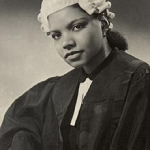
1941 - Frances Claudia Wright
Frances Claudia Wright (Called: 1941) was the first Sierra Leonean woman to be Called to the Bar in 1941. She was also the first Black woman Called by Gray’s Inn and the second Black woman to be Called to the Bar of England and Wales.
1945 - Essi Matilda Christian
Essi Matilda Christian (Called: 1945) was the third Black woman called to the Bar of England and Wales in 1945, and the first Ghanaian female lawyer. Christian, later Mrs Forster, was the daughter of George James Christian (Called 1902), an early Black barrister of Gray’s Inn.
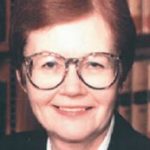
1955 - Dame Joyanne Bracewell
Called to the Bar in 1955 and an eminent champion of family law, Dame Joyanne Bracewell was the High Court judge responsible for drafting, and then overseeing the implementation of the Children Act, a significant piece of reforming legislation.
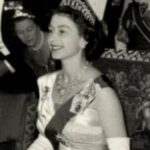
1956 - Gesta Grayorum
The “Gesta Grayorum” entertainment was performed in Hall in front of Her Majesty Queen Elizabeth II on 13 November 1956. The entertainment was based on the installation of the Prince of Purpoole during the Christmas revels of 1594, and the “Masque of Proteus” performed before Queen Elizabeth I at Shrovetide 1595.
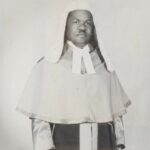
1956 - Benedicto Kiwanuka
Called to the Inn in 1956, Benedicto Kiwanuka was the first Chief Justice of Uganda who was a native Ugandan. He also went on to become the first Prime Minister of Uganda (while it was not yet fully independent).
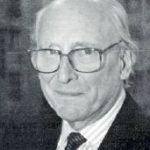
1959 - Lord Bingham
Lord Bingham was Called to the Bar in 1959, he went on to hold the roles of: Master of the Rolls 1992-96, Lord Chief Justice 1996-2000 and President of the Supreme Court 1996-2010. A champion of judicial independence and the Rule of Law and heralded as one of the greatest lawyers of our time.
1960 - Post-War Reconstruction
On 11 May 1960 the rebuilt Chapel was re-dedicated by the Archbishop of Canterbury, the Rt Rev Geoffrey Fisher, thus ending the Inn’s post-war reconstruction. Of the non-residential buildings, the Hall had been reopened on 5 December 1951 by HRH the Duke of Gloucester and the Library was reopened on 15 December 1958 by Prime Minister Harold MacMillan.
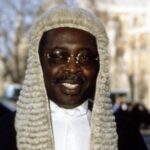
1969 - John Anthony Roberts
John Anthony Roberts originally joined the RAF where he qualified as an accountant before plying his trade in Law. Called to the Bar in 1969, was one of the first Black barristers to become a QC at the Bar of England and Wales in 1988.
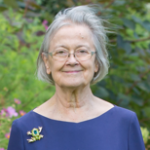
1969 - Lady Hale
Educated at a state school in Yorkshire, Brenda Hale joined Gray’s Inn and was Called to the Bar in 1969. She was later appointed Professor of Law at Manchester in 1986, to Queen’s Counsel in 1989, and Lord of Appeal in Ordinary and Baroness Hale of Richmond in 2004. Later in 2017, Lady Hale became the first woman President of the Supreme Court.
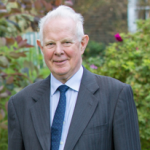
1969 - Lord Thomas
Lord Thomas was Called to the Bar in 1969 and appointed Queen’s Council in 1984. He later went on to become President of the Queen’s Bench Division and Lord Chief Justice. Sir John Thomas was the most senior judge on the three-man panel that in 2016 ruled the Government could not trigger Article 50 without the authority of Parliament.
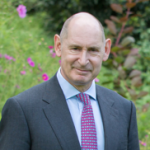
1974 - Sir Terence Etherton
Sir Terence Etherton (Called: 1974) is the Master of the Rolls and Head of Civil Justice, the second most senior judge in England and Wales. Etherton is also Britain’s first openly gay senior judge, he has been praised for “enlightened thinking” on many sensitive and vital areas of the Law.
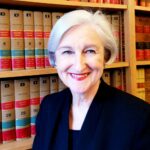
1976 - Dame Nicola Davies
Called in 1976, Dame Davis specialises in medical cases, including the Bristol Heart Surgeons Inquiry in 1998, Dame Nicola Davies was appointed High Court judge in 2010, Court of Appeal judge in 2018 and was the first Welsh woman judge in the Court of Appeal.
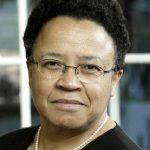
1981 - Dame Linda Dobbs
Dame Linda Dobbs, Called in 1981 and a Bencher of the Inn, was the first Black senior judge of England and Wales (High Court Judge 2004-2013).
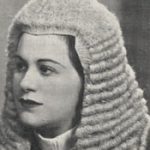
1985 - Rose Heilbron
Dame Rose Heilbron (Called 1939) was a woman of many first, the first woman to lead a murder case, first woman records, first woman judge to sit in the Old Bailey and the Inn’s first female Treasurer when appointed in 1985.
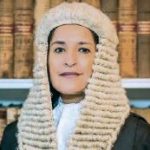
1989 - Dame Bobbie Cheema-Grubb
The Hon. Mrs Justice Cheema-Grubb is a judge of the Queen’s Bench Division of the High Court of Justice of England and Wales and the first Asian woman to serve as a High Court judge.
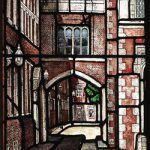
2011 - New Bridge
The new bridge connecting Hall and 10 South Square was completed and opened to Members, including The Bridge Bar, providing a relaxed setting for Members to enjoy food and drinks within.
2022 - City of London, School
In 2022, the City of London School opened a junior school at Gray’s Inn.

2022 - Visit by King Charles III
In November 2022, King Charles III visited Gray’s Inn where he met students, barristers and Benchers. His Majesty was made a Royal Bencher of the Inn in 1975 and his portrait sits in the Small Pension Room.

